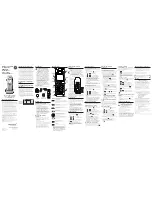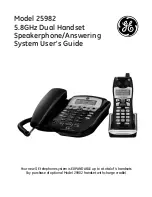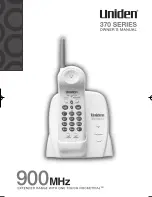
U.S. Food and Drug Administration (FDA)
80
English
What is FDA's role concerning the safety of mobile phones?
Under the law, FDA does not review the safety of radiation-
emitting consumer products such as mobile phones before
marketing, as it does with new drugs or medical devices.
However, the agency has authority to take action if mobile
phones are shown to emit radiation at a level that is hazardous to
the user. In such a case, FDA could require the manufacturers of
mobile phones to notify users of the health hazard and to repair,
replace or recall the phones so that the hazard no longer exists.
Although the existing scientific data do not justify FDA regulatory
actions at this time, FDA has urged the mobile phone industry to
take a number of steps to assure public safety. The agency has
recommended that the industry:
• support needed research into possible biological effects of RF
of the type emitted by mobile phones;
• design mobile phones in a way that minimizes any RF
exposure to the user that is not necessary for device function;
and
• cooperate in providing mobile phone users with the best
possible information on what is known about possible effects
of mobile phone use on human health.
At the same time, FDA belongs to an interagency working group
of the federal agencies that have responsibility for different
aspects of mobile phone safety to ensure a coordinated effort at
the federal level. These agencies are:
• National Institute for Occupational Safety and Health
• Environmental Protection Agency
• Federal Communications Commission
• Occupational Health and Safety Administration
• National Telecommunications and Information Administration
The National Institutes of Health also participates in this group.
In the absence of conclusive information about any possible
risk, what can concerned individuals do?
If there is a risk from these products--and at this point we do not
know that there is--it is probably very small. But if people are
concerned about avoiding even potential risks, there are simple
steps they can take to do so. For example, time is a key factor in
how much exposure a person receives. Those persons who spend
long periods of time on their hand-held mobile phones could
consider holding lengthy conversations on conventional phones
and reserving the hand-held models for shorter conversations or
for situations when other types of phones are not available.
People who must conduct extended conversations in their cars
every day could switch to a type of mobile phone that places
more distance between their bodies and the source of the RF,
since the exposure level drops off dramatically with distance. For
example, they could switch to:
• a mobile phone in which the antenna is located outside the
vehicle,
• a hand-held phone with a built-in antenna connected to a
different antenna mounted on the outside of the car or built
into a separate package, or
• a headset with a remote antenna to a mobile phone carried at
the waist.
Again, the scientific data do not demonstrate that mobile phones
are harmful. But if people are concerned about the
radiofrequency energy from these products, taking the simple
precautions outlined above can reduce any possible risk.
m3gst_en.bk Page 80 Sunday, May 14, 2000 7:49 PM
Содержание T2282
Страница 1: ...English Menu Quick Access Quick Reference ...
Страница 10: ...M ...
Страница 32: ...eiving Phone Calls M ...
Страница 33: ...Using the Options Menu 33 English Using the Options Menu M ...
Страница 39: ...Using the Options Menu 39 English enu M ...
Страница 74: ...M ...
Страница 82: ...Drug Administration FDA M ...
Страница 88: ...6809425A15 56 15 59 15 75 83 M ...









































